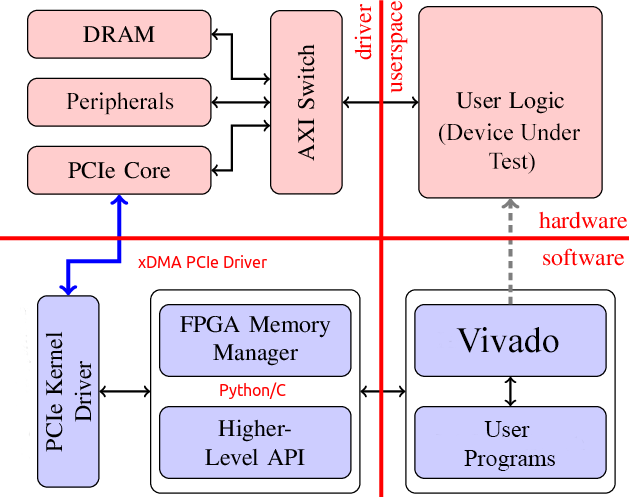1. Project Summary¶
1.1. Project Abstract¶
It can be challenging for universities to provide applicable, real-world experience to undergraduate students. Utilizing development boards provided by Qualcomm, students will be able to explore fundamental HDL-based concepts not normally covered in an academic setting. Project effectiveness and student engagement is studied for further improvements.
The project is separated into three distinct subsystems: software, infrastructure, and DUT. The relationship between each subsystem is outlined according to the block diagrams here and on the introductory page. Each subsystem and its complementary documentation is tested for cohesiveness according to student participation and subsequent feedback. The subsystems make up a comprehensive prototyping environment that will provide valuable FPGA experience for undergraduate students in the future and act as a valuable asset for the University of San Diego’s computer engineering department moving forward.

Top-level block diagram of system¶
1.2. Project Background¶
Our primary goal was to provide an industry-grade development kit to foster advanced digital design and hardware platform competencies. This included focusing on building a development kit for the given Qualcomm hardware, setting up the infrastructure of the board, instantiating the design components, and uitilizing software to directly interface with the board.
The project objectives concentrated on having clear and concise enough information for an undergraduate engineering student to utilize and provide illustrations/examples in order to deepen comprehension with benchmark tests for the completion of each task and providing additional resources for further research.
This capstone project was part of the 2021 University of San Diego Shiley-Marcos School of Engineering & Computing Showcase. The landing page can be found here.